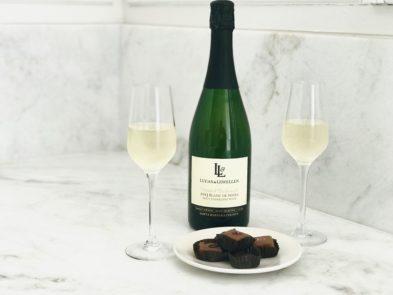The True Story of the Birth of the Bottle of Bubbly
If you enjoyed Champagne or sparkling wine last week while gleefully celebrating the demise of 2020, you may not have thought about the heavy bottle containing the bubbly. But there is a story there.
Wood emerged as a precious commodity in the 1500s. The population of England and Wales soared, escalating demand for wood. Wood was used to construct and heat buildings. It was used in glass making. It was vital to ship building.
As demand for wood surged, shortages of wood imperiled Europe, especially England. In 1615, King James I — sponsor of the King James bible — issued a proclamation prohibiting widespread use of wood. His goal: conserve wood to keep his royal navy afloat.
Glassmakers at the time used charcoal made from oak trees to heat their furnaces. With the oak supply cut off, inventive English glassmakers turned to coal. England had plenty of coal. To their joy, glassmakers discovered higher temperatures achieved with coal allowed them to produce stronger glass. That included very sturdy bottles capable of containing high pressure — two or three times the pressure inside your automobile’s tires — created when wine fermented in the bottle and produced carbon dioxide.
Thus, the bottle for French Champagne was birthed in coal-fired furnaces of England.
In a related note, there is a raging dispute over whether the French or the English “invented” sparkling wine. Arguments can be made for either side. It tilts toward England, with France more robustly exploiting the discovery once there were sturdy English bottles in which to make the stuff.
To dash a myth, Dom Pérignon did not create or develop Champagne. The Benedictine monk almost certainly never said “come quickly, I am tasting the stars!” But that is a discussion to keep bottled up for another day.
Tasting notes:
Gratien & Meyer Crémant de Loire Brut Rosé NV: Soft, light, fruity, nice acidity. Clean, brisk, but with ripe fruit softness. French sparkling not made in Champagne. $15-18
Lucas & Lewellen Méthode Traditionelle Brut Sparkling Wine 2016: Superb expression of Burgund-style sparkling from quality California maker. $36
Champagne Palmer & Co. Brut Réserve Champagne à Reims NV: Bright, fresh, lively, succulent, nice dash of elegance, finesse. Palmer sometimes is called “best Champagne house you have never heard of.” $45-55
Last round: I drink Champagne when I am in love because it enhances everything. I drink Champagne when I am not in love to tide me over until I am in love. As you can see, my true love is Champagne.
